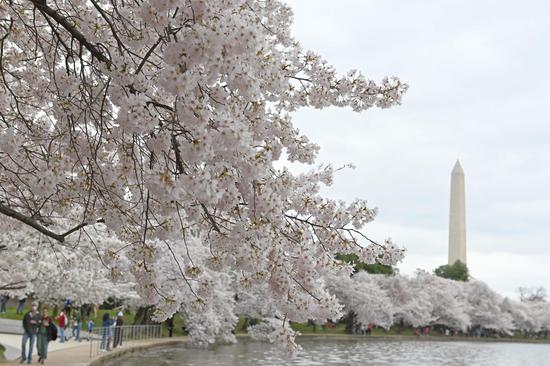Although China has entered a high-speed railway era, there still exist "slow trains" in several less developed areas. As a sign of the times, they also pave a path for villagers to the outside world and prosperity.
When train No 6064 stopped in Yangpingguan station, 51-year-old Xue Qing'e was trying to get on board with 30 kg of vegetables on her back.
Xue was relieved by help from a conductor as she felt she was being pulled backward by the heavy bamboo basket. She took her seat, panting and gasping for breath.
This is an ordinary journey for Xue and many villagers from Yangpingguan, a township in Hanzhong, Northwest China's Shaanxi province. They take the train to sell their vegetables in nearby counties to add to the family income.
With a length of 257 km, the highly popular "small-and-slow train" route winds through the Qinling Mountains, a natural boundary between China's north and south, linking 37 stations with a cost of 21.5 yuan (about $3.3).
For greengrocer villagers living along the line, the railway is their preferred choice as it is more convenient and comfortable.
"After deducting the 6 yuan round-trip fare and the 6 yuan lunch fee, I can earn 40 to 50 yuan after selling the basket of vegetables," said Xue.
While tilling about 0.13 hectares of farmland and caring for her sick mother, Xue commutes 1.5 hours a day by train to sell vegetables, earning more than 10,000 yuan a year. Over the years, she and her husband worked hard to help their son through college and build a new two-story house.
"I have been striving for a better life for decades, and I want to strive further," she said. "Because the harder you work, the happier you are."
For villagers from townships along the railway route, the "small-and-slow train" service offers fresh opportunities to make a fortune with the Spring Festival around the corner.
Zhang Weiming, 46, works in Beijing as a subway construction worker and earns 5,000 to 6,000 yuan per month. After returning to his hometown in Shaanxi in December last year, he had hardly a break before having to start selling his vegetable using the train route.
"I can make over 300 yuan with these vegetables," Zhang laughed, referring to his bamboo basket loaded with 50 kg of ginger and the extra vegetables he held in his hands.
To meet the travel demand for villagers, although the train route does not make a lot of money, the railway operator keeps it running and offers diversified services, said Wang Jianlin, with China Railway Xi'an Group Co Ltd.
Some temporary bazaars are established in carriages to help villagers trade agricultural products, while mobile libraries are also emerging to facilitate children who commute to and from school, with various books prepared on modified tables that are longer and wider.
The train whistled as it arrived at Lueyang station, and Xue got off carrying her bamboo basket labeled with the Chinese character "fortune" that train staff prepared for the upcoming festival.
The "small-and-slow train" continues moving forward. "Every person is remarkable," says a banner on the carriage.


















































